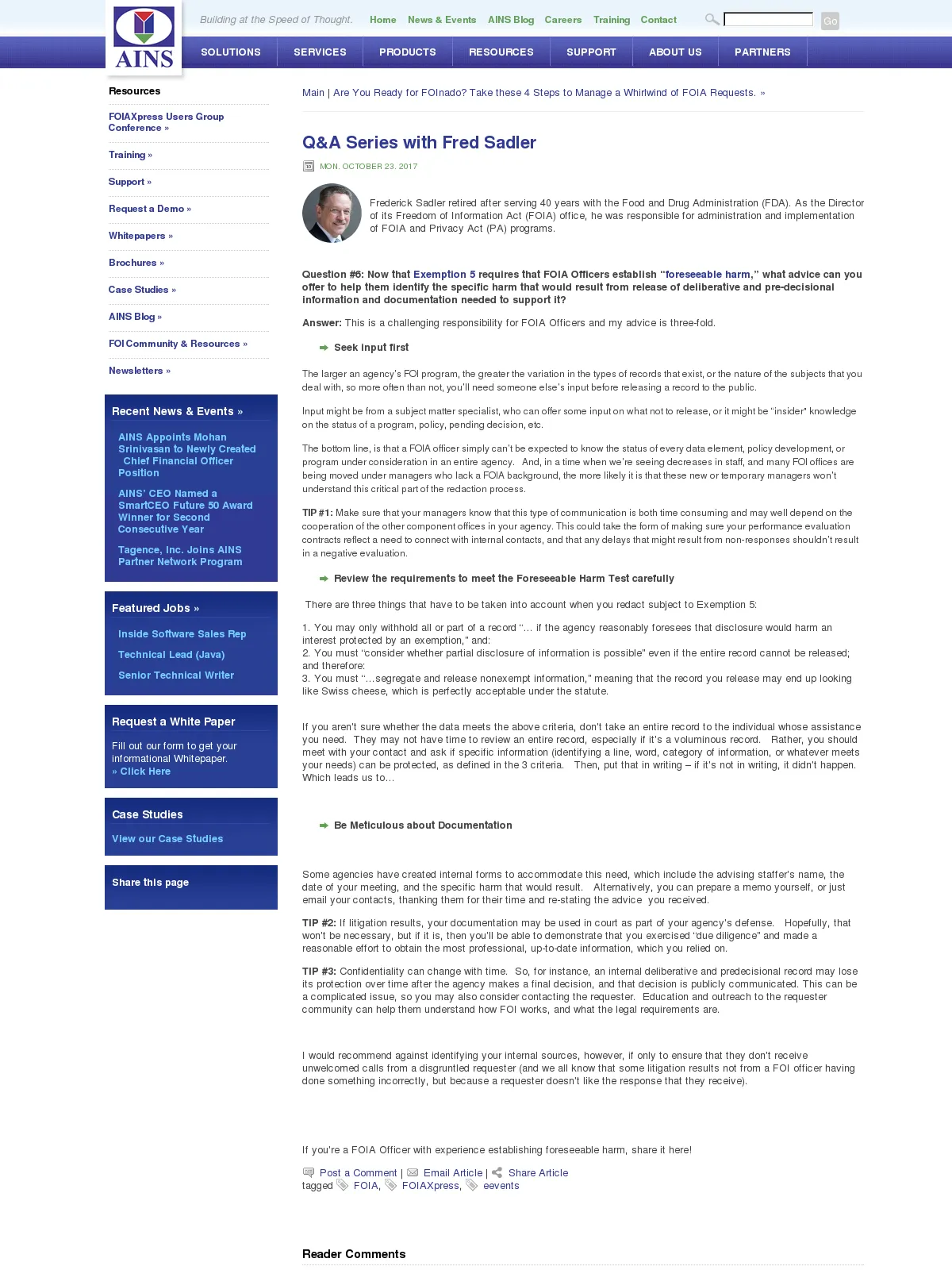Q&A Series with Fred Sadler
Blog: eCase Case Management Blog

Frederick Sadler retired after serving 40 years with the Food and Drug Administration (FDA). As the Director of its Freedom of Information Act (FOIA) office, he was responsible for administration and implementation of FOIA and Privacy Act (PA) programs.
Question #6: Now that Exemption 5 requires that FOIA Officers establish “foreseeable harm,” what advice can you offer to help them identify the specific harm that would result from release of deliberative and pre-decisional information and documentation needed to support it?
Answer: This is a challenging responsibility for FOIA Officers and my advice is three-fold.
- Seek input first
The larger an agency’s FOI program, the greater the variation in the types of records that exist, or the nature of the subjects that you deal with, so more often than not, you’ll need someone else’s input before releasing a record to the public.
Input might be from a subject matter specialist, who can offer some input on what not to release, or it might be “insider” knowledge on the status of a program, policy, pending decision, etc.
The bottom line, is that a FOIA officer simply can’t be expected to know the status of every data element, policy development, or program under consideration in an entire agency. And, in a time when we’re seeing decreases in staff, and many FOI offices are being moved under managers who lack a FOIA background, the more likely it is that these new or temporary managers won’t understand this critical part of the redaction process.
TIP #1: Make sure that your managers know that this type of communication is both time consuming and may well depend on the cooperation of the other component offices in your agency. This could take the form of making sure your performance evaluation contracts reflect a need to connect with internal contacts, and that any delays that might result from non-responses shouldn’t result in a negative evaluation.
- Review the requirements to meet the Foreseeable Harm Test carefully
There are three things that have to be taken into account when you redact subject to Exemption 5:
If you aren’t sure whether the data meets the above criteria, don’t take an entire record to the individual whose assistance you need. They may not have time to review an entire record, especially if it’s a voluminous record. Rather, you should meet with your contact and ask if specific information (identifying a line, word, category of information, or whatever meets your needs) can be protected, as defined in the 3 criteria. Then, put that in writing – if it’s not in writing, it didn’t happen. Which leads us to…
- Be Meticulous about Documentation
Some agencies have created internal forms to accommodate this need, which include the advising staffer’s name, the date of your meeting, and the specific harm that would result. Alternatively, you can prepare a memo yourself, or just email your contacts, thanking them for their time and re-stating the advice you received.
TIP #2: If litigation results, your documentation may be used in court as part of your agency’s defense. Hopefully, that won’t be necessary, but if it is, then you’ll be able to demonstrate that you exercised “due diligence” and made a reasonable effort to obtain the most professional, up-to-date information, which you relied on.
TIP #3: Confidentiality can change with time. So, for instance, an internal deliberative and predecisional record may lose its protection over time after the agency makes a final decision, and that decision is publicly communicated. This can be a complicated issue, so you may also consider contacting the requester. Education and outreach to the requester community can help them understand how FOI works, and what the legal requirements are.
I would recommend against identifying your internal sources, however, if only to ensure that they don’t receive unwelcomed calls from a disgruntled requester (and we all know that some litigation results not from a FOI officer having done something incorrectly, but because a requester doesn’t like the response that they receive).
If you’re a FOIA Officer with experience establishing foreseeable harm, share it here!
